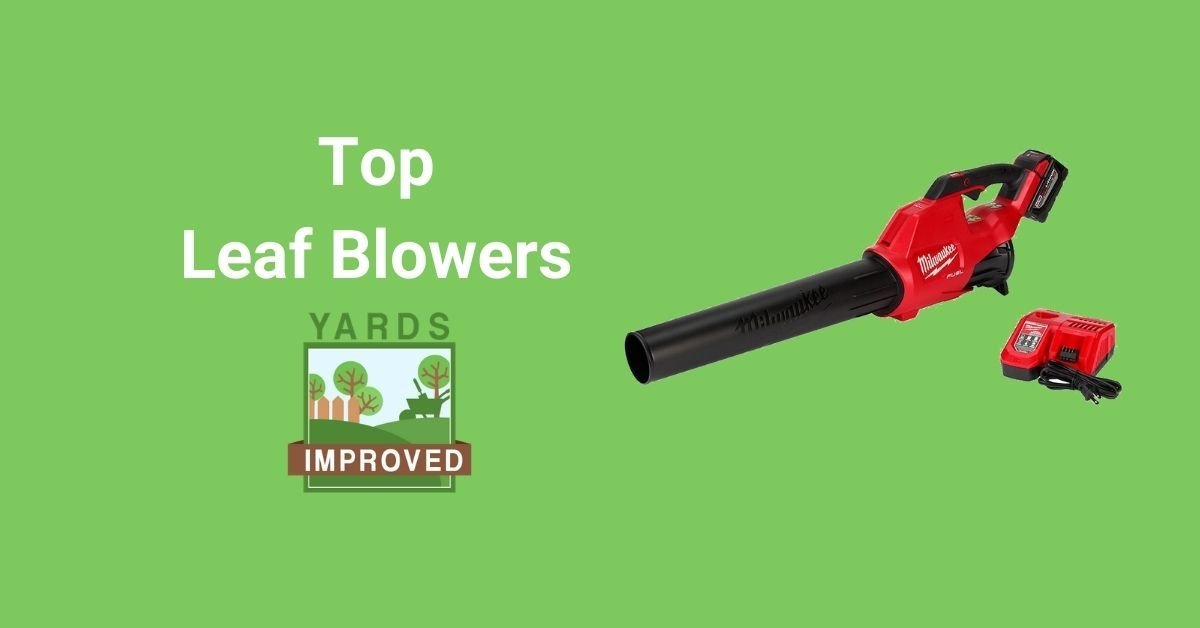Fall is a beautiful time of year. The weather cools and the leaves turn brilliant colors. It’s a time of harvest and the setting for some great holidays. But then the leaves drop, and you’re stuck picking them up. If you have a good-sized yard, that can be a lot of work. A leaf blower is a great choice to make it easier.
What To Look For In A Leaf Blower
If you remember the TV show “Home Improvement”, you’ll recall how Tim “The Toolman” Taylor always wanted to soup up his electric tools with more power. And power is one of the most important features of a leaf blower. But it’s not the only one.
Yes, you do want enough power to blow all the leaves in your yard into nice piles so you can pick them up. A lot of times, the leaves are going to be damp, too. Even if it hasn’t rained, dew can accumulate underneath the leaves, weighing them down.
Of course, you don’t want to try cleaning up right after a storm while everything is still soaked. But conditions will never be perfect. So your leaf blower needs enough horsepower to handle your whole yard even if the leaves are damp.
Picking up leaves is just one chore for the fall – check out our yard cleanup guide!
You also want a unit that is easy to move through your yard. There are a variety of types, and you have to take the size of your yard into account.
Another important factor is being able to reach where you need to. If you have bushes, flower beds, narrow spaces, or other obstacles to work around, you’ll want to be sure your leaf blower can do the job.
With these factors in mind, let’s look at each one in more detail along with some of the available options.
How Much Power Do You Need?
One of the primary factors to consider is the power your leaf blower offers. Too little means it will take too long to get the job done. Too much and you’re just wasting money.
The power of a leaf blower is measured by two things: how much air it puts out and how fast that air comes out of the tube. CFM stands for cubic feet per minute and represents the total volume. MPH is, as usual, miles per hour and represents the speed at which it comes out.
Both of these are important. If one is too low, it doesn’t matter what the other is. However, CFM is slightly more important.
If you have a large yard, you want a blower that is rated at least 500 CFM. More is better, though. With a smaller yard, though, 300 CFM is enough.
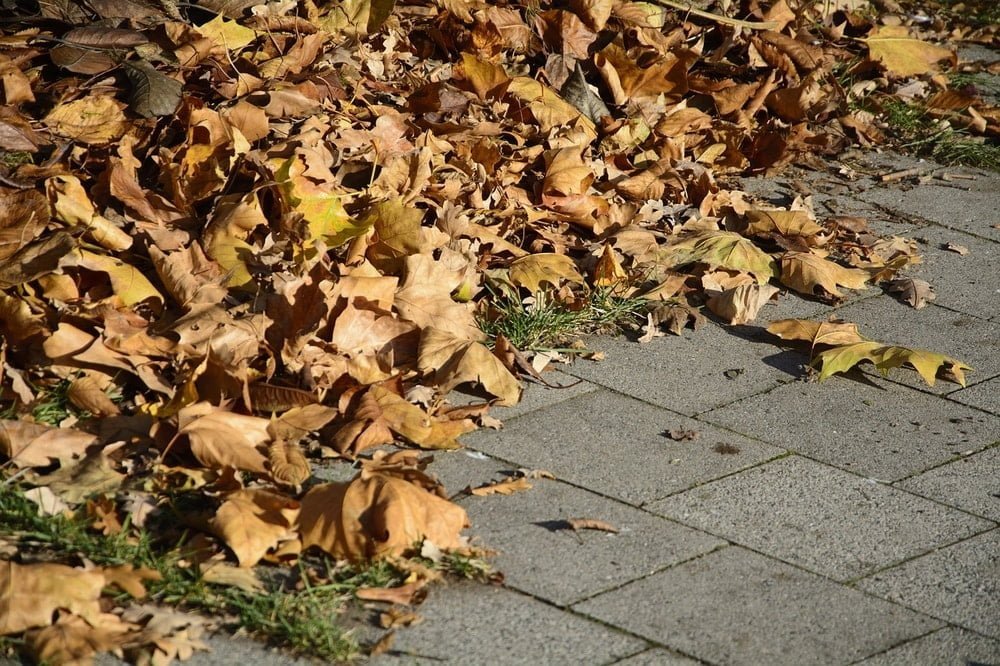
Handheld, Backpack, or Walk-behind?
Besides power, you also want a unit that is easy to handle and won’t tire you out.
There are three types of leaf blower in terms of how they are held: handheld, backpack, or walk-behind.
A handheld unit is the lightest unit. For small areas, they are a great option. They are more affordable than other types.
They’re also fantastic for working around bushes, rocks, gardens and for reaching into corners. Even if you have a larger yard, this can be a great choice for some of the detail work.
A backpack unit is a step up from its handheld counterparts. You strap it on like a backpack. That allows you to carry a little more weight without getting worn out. It also means you can pack more power into the unit. You just have to direct the tube with your hand. This is good for any size yard and still allows you the flexibility to reach into narrow spaces.
Walk-behind leaf blowers offer the most power. If you have a large space to clean up, this is likely the best choice for you. You don’t have to carry anything; you just push it like a lawnmower. The biggest drawback, though, is that it isn’t useful for getting into tight spaces.
Corded vs. Battery vs.Gas
Another factor to consider is how your leaf blower is powered. Handheld blowers can have any of these three power sources. We suppose that can be true for backpack and walk-behind models, too, but those are more commonly fueled by gas.
A corded model is dependable but you don’t have much range. You’ll need to use an extension cord, and that will limit you to about a 100 yards from the nearest outlet. You also have to be careful not to get the cord wrapped around trees or other obstacles. However, it’s ready to go when you are, it starts easily, and is the lightest type.
Battery-operated leaf blowers give you more freedom, although they weigh a tiny bit more, too. If you need more range, this is a good option. Still, you’ll need to remember to charge the battery ahead of time!
Gas-powered units are the most powerful units. It might be slightly harder to start than just flipping a switch, but once you’re going, it’s great. You’ll have a wide range and be able to get the job done satisfactorily. They are kind of noisy, though, so you should be prepared with ear protection.
What Else to Consider in a Leaf Blower
Of course, there are always options to consider beyond the basics.
For instance, there are leaf blowers that can also vacuum the leaves up into a bag. This feature can be a great addition. Some of these can even mulch the leaves so you can recycle them easily.
Another option to consider is a gutter attachment. These longer tube extensions usually have a “J” curve at the end so you can reach up and blow leaves out of the gutter. This helps water flow smoothly and prevents ice dams from forming in winter.
Our Picks for the Best Handheld and Backpack Leaf Blowers
Let’s have a look at some of the best leaf blowers on the market right now. We know there are many more options out there, but we consider these as some great options.
ECHO PB-770H Backpack Leaf Blower
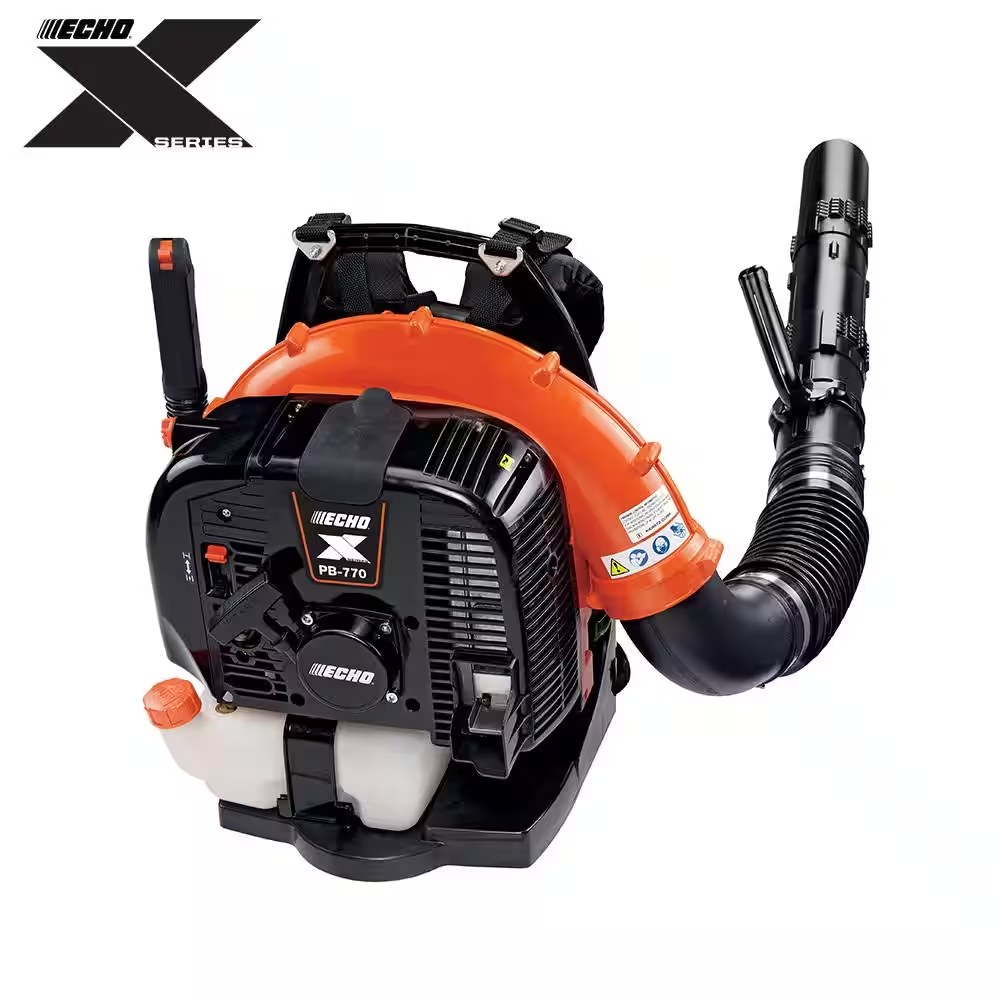

The ECHO PB-770H is a backpack model that will help you clean up the leaves in your large yard quickly and easily.
This unit pumps out a powerful 756 CFM at a rate of 2343 MPH, great for big projects. It also has handy features like a throttle right on the tube for easy access. It also has a “cruise control” mode to keep it going without a lot of extra effort. It does offer variable speeds.
The two-cycle engine measures 63.33 cc. It has a 68.3 ounce fuel capacity.
The total weight of the unit is 24.5 pound.
This unit straps over the shoulder; it doesn’t offer a waist strap.
It is rather loud, although no more than could be expected in this class. It runs at about 74 dB, which is about as loud as a toilet flushing. That may not seem loud, but it can be annoying and borderline harmful with prolonged use.
This model has a 5-year warranty for consumer use or 2-years on commercial use.
RYOBI Gas Backpack Leaf Blower
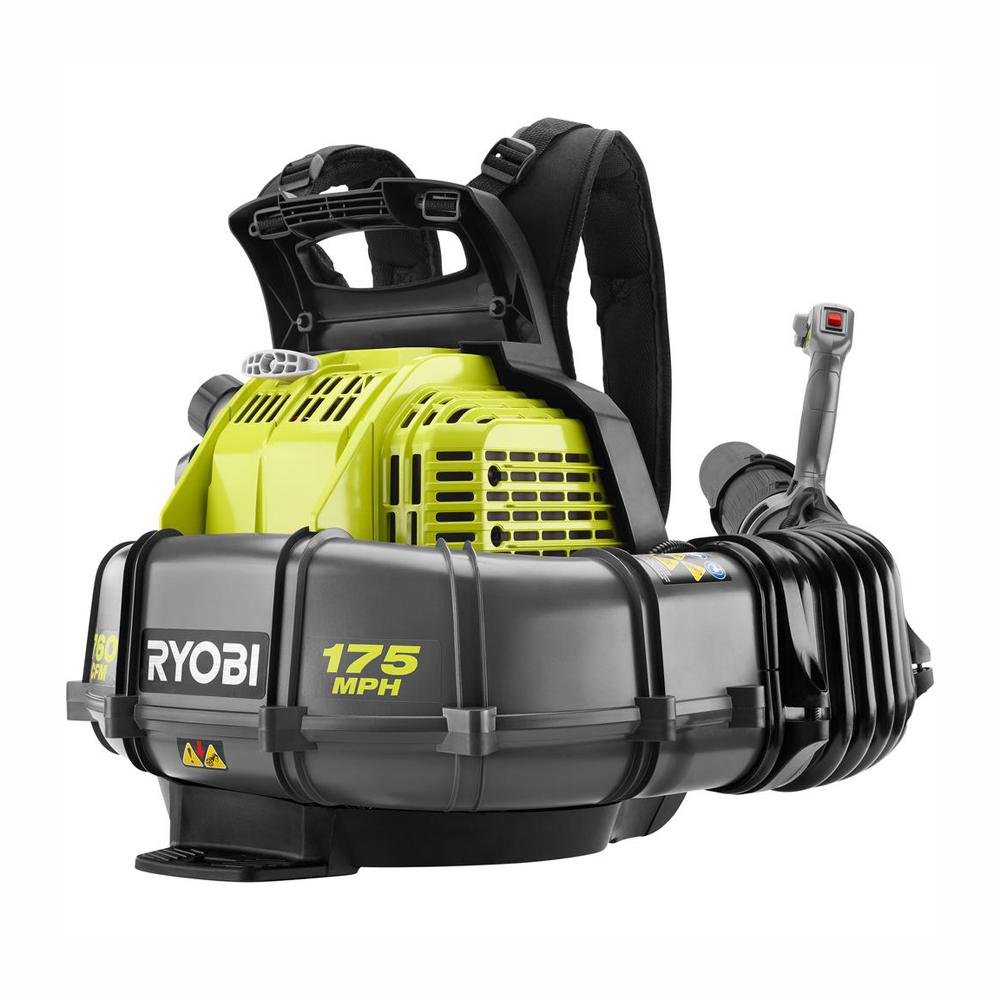

Ryobi makes a fine backpack leaf blower, too. This model works great for large spaces. It runs at 760 CFM and 175 MPH. That’s higher CFM than the ECHO model above but a lower MPH. Still, it’s in a great range for both.
The unit has a 38cc 2-cycle gas engine. It has variable speed settings and can also be set to cruise control. The gas tank holds 30 ounces.
The entire unit weighs just 20 pounds, which is pretty impressive considering the power it offers.
It can be a little tough to attach the plastic tube the first time, although once you figure out a decent way to do it, you shouldn’t have problems again.
There is a 3-year warranty on the Ryobi unit.
EGO 110 MPH 530 CFM Variable-Speed Turbo 56-Volt Lithium-ion Cordless Leaf Blower


This handheld leaf blower from EGO offers a lot of power for a model you can carry so easily, although that power is only available briefly. It has two settings at 530 or 250 CFM and blows the air out at 110 MPH. That may be substantially less than backpack models, but it’s nice for a handheld.
The 530 MPH mode is only in “turbo” mode, and this will burn your battery quickly – as fast as 10 minutes, according to some reports.
This is a battery-operated model. We’ve linked to the item with the lithium-ion battery and charger included; however, if you just need the tool without this, you can simply click the button on Home Depot’s site (near the price). The tool itself weighs 4.7 pounds; the whole kit (including the charger) weighs 9.8 pounds.
It runs at about 65 dB. Hardly silent but solidly in a safe range!
It has a 5-year warranty.
RYOBI 120 MPH 550 CFM 40-Volt Lithium-Ion Brushless Cordless Jet Fan Leaf Blower
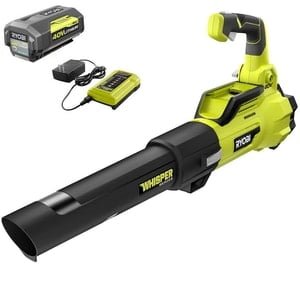

This Ryobi handheld model offers great power and will have the leaves fleeing into your trap! Not only that, but it runs quietly, as well.
It offers a lot of power, at 550 CFM and 120 mph. Despite that, it produces only about 59 decibels – even less than an electric shaver!
It weighs 9.7 pounds – kind of a mid-range size. It doesn’t include a strap, but the weight doesn’t require one, either.
It has adjustable speed settings, so you can boost it into turbo mode when needed, or turn it down when you don’t.
It works on the same batteries as any Ryobi 40-volt tool. One battery is included, as is the charger. You’ll get around 30 minutes of battery life out of it – not bad, but not great either. However, there have been reports of much shorter battery life from some owners, which could be related to a bad batch of batteries. Fortunately, Ryobi does have decent customer service and covers the battery for three years.
A five-year warranty covers the blower. The battery is covered for three years.
Milwaukee M18 FUEL Cordless Handheld Blower Kit
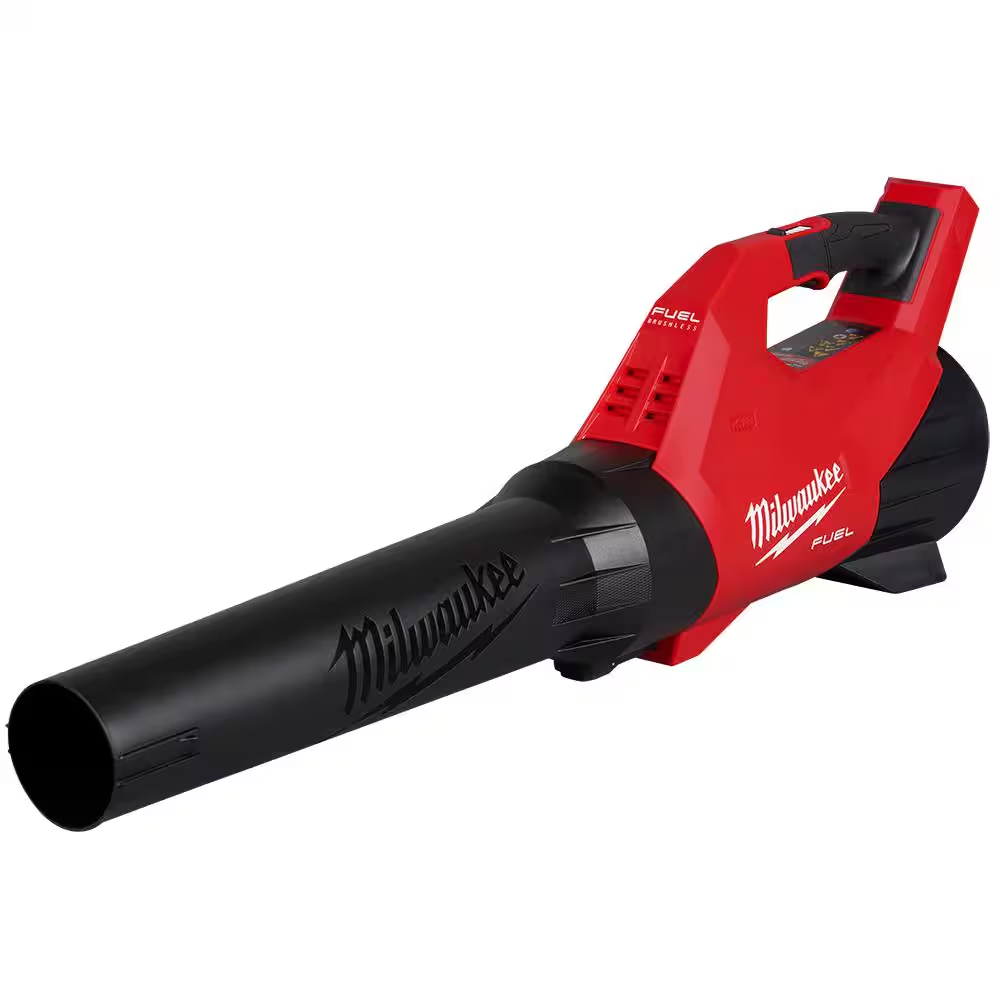

This battery-powered handheld blower from Milwaukee offers good speed and is lightweight. It will help you get your yard cleaned up without quickly and without arm fatigue.
Ideal for small- or mid-sized yards, this model blows up to 450 CFM at 120 MPH. It’s not extremely powerful but will take care of most jobs around the yard without any issues. It has two speed settings.
Overall, it’s a solid unit. It’s ,not the highest-powered system you’ll find, but it’ll get the job done.
Conclusion
Keeping the leaves cleaned up in your yard can be an annoying task, but a leaf blower can help it go by more easily. The type of blower you should choose depends primarily on the size of your yard. Evaluate your options and choose one that produces sufficient air volume for your yard. There’s no need to overdo it; a small yard doesn’t need an overpowered model. We hope this fall’s chores will go easier with your new leaf blower!

